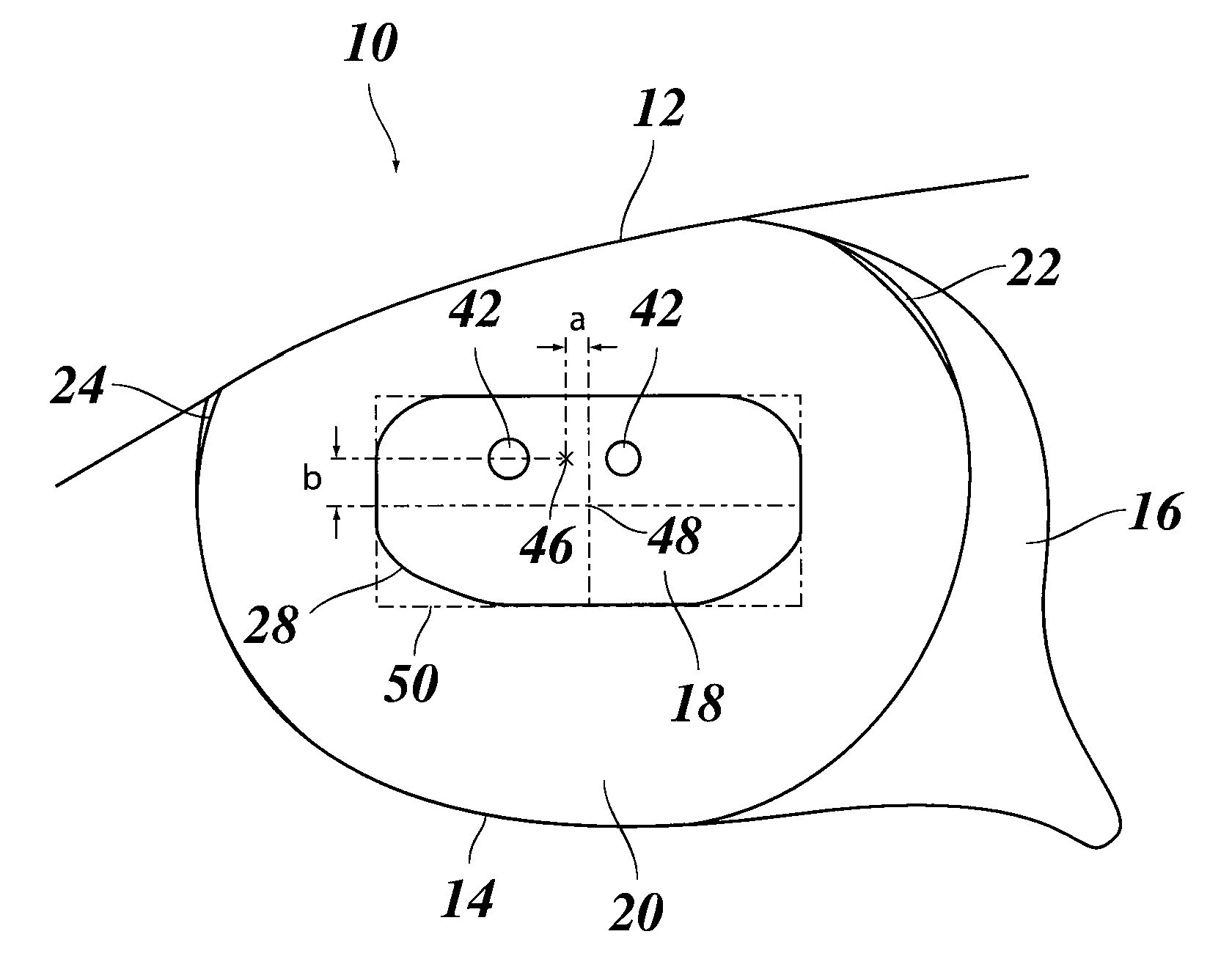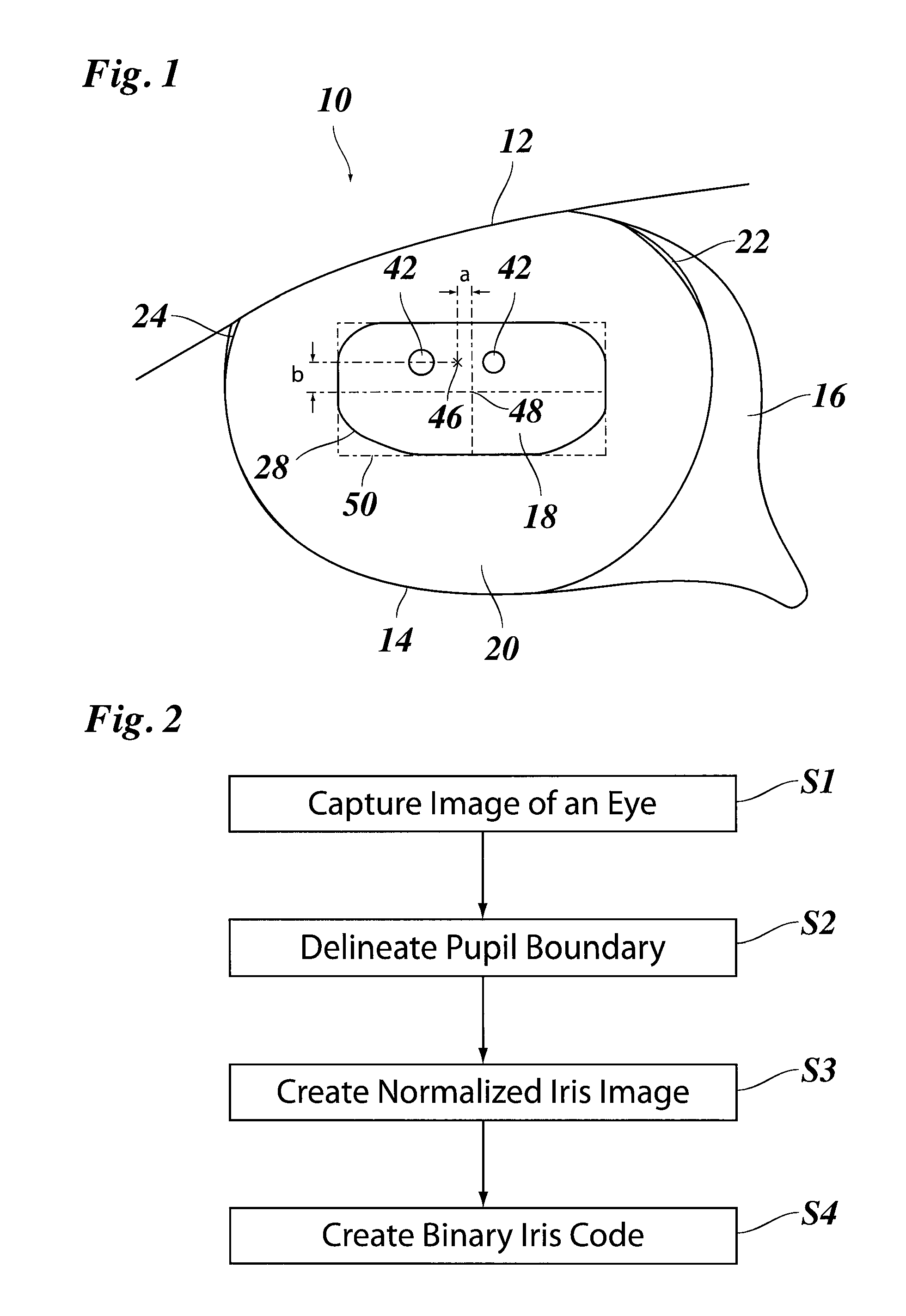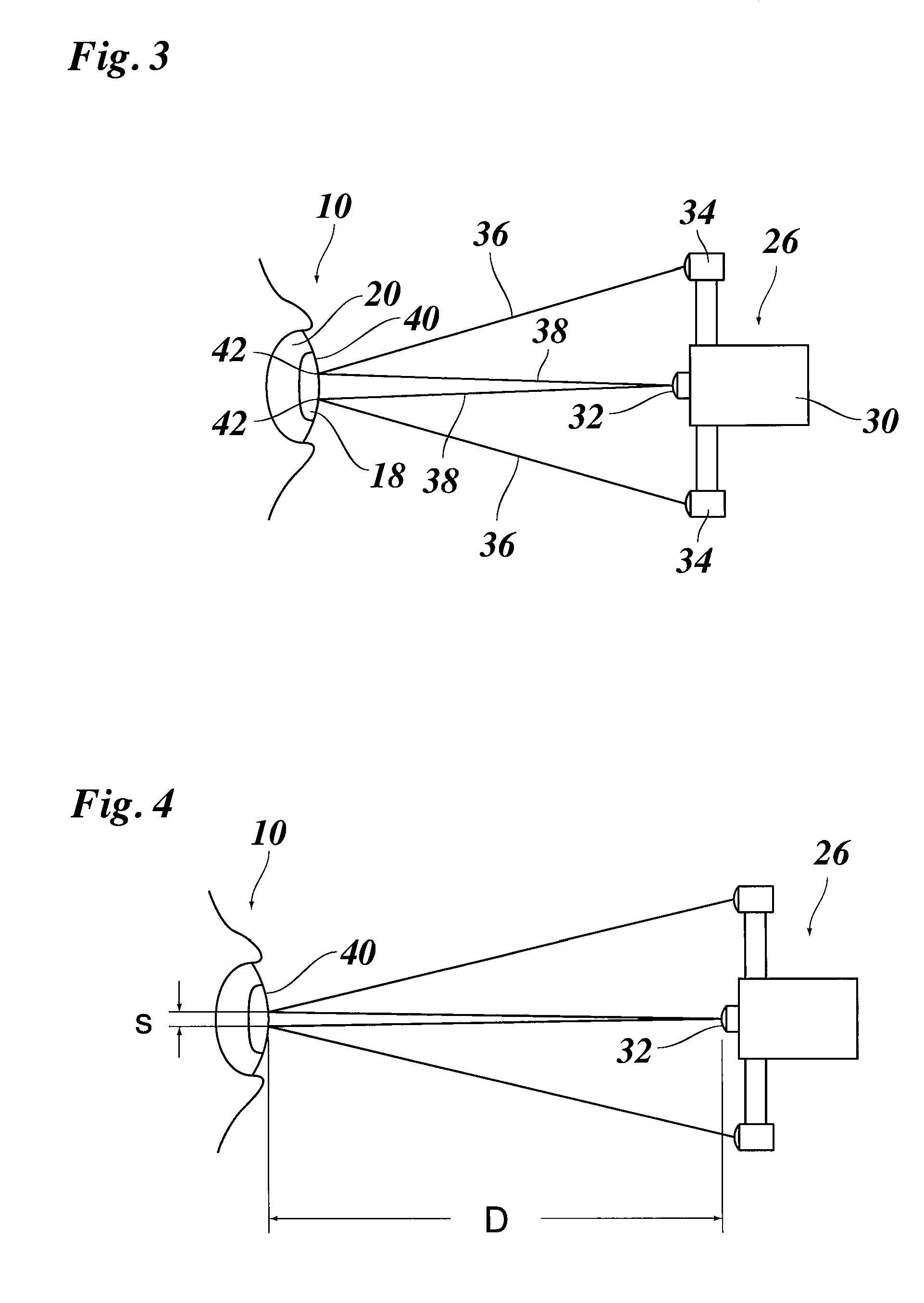Method of generating a normalized digital image of an iris of an eye
a digital image and iris technology, applied in the field of generating a normalized digital image of an iris of an eye, can solve the problem that the iris will normally be distorted to some exten
- Summary
- Abstract
- Description
- Claims
- Application Information
AI Technical Summary
Benefits of technology
Problems solved by technology
Method used
Image
Examples
Embodiment Construction
[0044]As an example of an image of an eye of a vertebrate, FIG. 1 shows an image of a (left) eye 10 of a horse. An upper lid 12, a lower lid 14, a conjunctiva 14, a pupil 18 and an iris 20 of the eye have been shown schematically. As is typical for horses, the pupil 18 is elongated in lateral direction. A bright sclera 22 of the eye is obscured almost completely by the eyelids, so that only small fractions of an outer boundary 24 of the iris (iris / sclera boundary) are visible.
[0045]FIG. 2 illustrates essential steps of a method for creating an iris code from an image of the type shown in FIG. 1.
[0046]In a step S1, an image of the eye is captured with a digital camera 26 (shown in FIG. 3).
[0047]In step S2, the digital image is subjected to image processing algorithms for delineating a boundary 28 of the pupil 18.
[0048]In step S3, the image is subjected to further image processing for creating a normalized iris image, i.e. an image of the iris that is normalized to a standard size of ...
PUM
 Login to View More
Login to View More Abstract
Description
Claims
Application Information
 Login to View More
Login to View More - R&D
- Intellectual Property
- Life Sciences
- Materials
- Tech Scout
- Unparalleled Data Quality
- Higher Quality Content
- 60% Fewer Hallucinations
Browse by: Latest US Patents, China's latest patents, Technical Efficacy Thesaurus, Application Domain, Technology Topic, Popular Technical Reports.
© 2025 PatSnap. All rights reserved.Legal|Privacy policy|Modern Slavery Act Transparency Statement|Sitemap|About US| Contact US: help@patsnap.com



